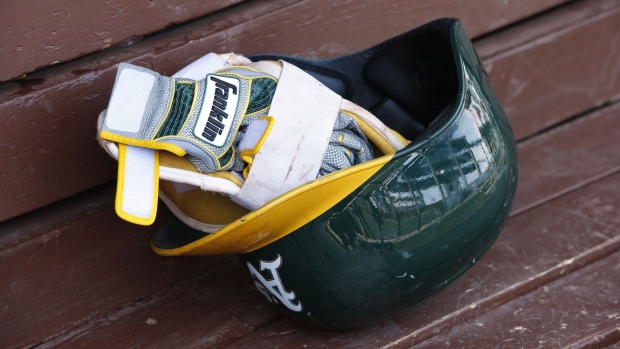Apr 27, 2023
Oakland Athletics Face a $500 Million Battle With Las Vegas Over New Stadium
, Bloomberg News

(Bloomberg) -- The Oakland Athletics are poised to leave the Bay area, but officials in their new Las Vegas home are holding back the welcoming party.
Earlier this month, the A’s signed a deal to purchase a 49-acre plot for a future ballpark near the Las Vegas Strip — ending a more than decade-long struggle to find a new stadium in the Bay Area. To clinch the move, the franchise wants roughly $500 million in public financing to build a 35,000 seat retractable-roof stadium and entertainment complex.
But the details still need to be hammered out and Las Vegas Mayor Carolyn Goodman is wary about using public dollars to subsidize a private enterprise. It would be the third professional sports complex built in Clark County, Nevada over the last nine years and the second to be built using public funds.
“To make this work the owners need to make a bold statement upfront,” Goodman said in a phone interview. “What you want to see is the private ownership come in and be invested in our community and not just look to each of us who calls this home for more taxes. No thank you!”
Although negotiations could be extended, the A’s and Clark County are working to strike a deal on a public-private partnership before Nevada’s current legislative session ends on June 5.
Adding to the urgency, the A’s need an accord for a new stadium by January 2024 to continue participating in Major League Baseball’s revenue-sharing agreement. The team didn’t immediately respond to requests for comment.
The Las Vegas Proposal
Initial proposals to finance the stadium would rely on $150 million of transferable tax credits and an undisclosed amount of development tax incentives as well as Clark County-issued bonds that will be repaid using proceeds from the creation of a new special district in the area surrounding the site, according to economist Jeremy Aguero of Applied Analysis.
“The county would create something that’s new, a sports and entertainment district, which would allow all of the taxes, fees, and charges to be reinvested back into the district,” Aguero, who is advising the team as well as Governor Joe Lombardo on a financing package, said.
The A’s deal makes sense for Clark County and Las Vegas as the fiscal impacts outweigh the costs, according to Aguero, who says city tourism would get a boost from another stadium.
But critics point to Allegiant Stadium, the home of the Las Vegas Raiders that opened in July 2020.
The Raiders’ venue was financed by $645 million of debt backed by revenues from a tiered hotel room tax. Those bonds struggled in 2020 as the pandemic took hold and tourism collapsed, forcing the county to dip into a debt service reserve fund to make payments that year and the next, according to regulatory filings.
True Costs
While initial estimates from the A’s peg total development costs at $1.5 billion, these types of stadium projects almost always rack up cost overruns, according to Andrew Zimbalist, an economics professor at Smith College who was approached by Oakland to analyze and write about its proposal to build a new waterfront ballpark near the city’s port.
“The notion that this is going to be self-financing or an economic plus to me seems quite dubious,” said Zimbalist.
Despite near universal acknowledgment that the projected economic benefits of professional sports developments don’t end up matching the costs, several sports franchises, including the Texas Rangers, Buffalo Bills, and Tennessee Titans have been able to petition for public dollars over the last decade.
“Generally speaking, the economic development associated with stadium building doesn’t seem to generate the economic activity that is typically expected,” said Lisa Washburn, a managing director at at Municipal Market Analytics.
--With assistance from Giles Turner.
(Updates eighth paragraph with new details about economist Jeremy Aguero’s role in ongoing negotiations.)
©2023 Bloomberg L.P.





